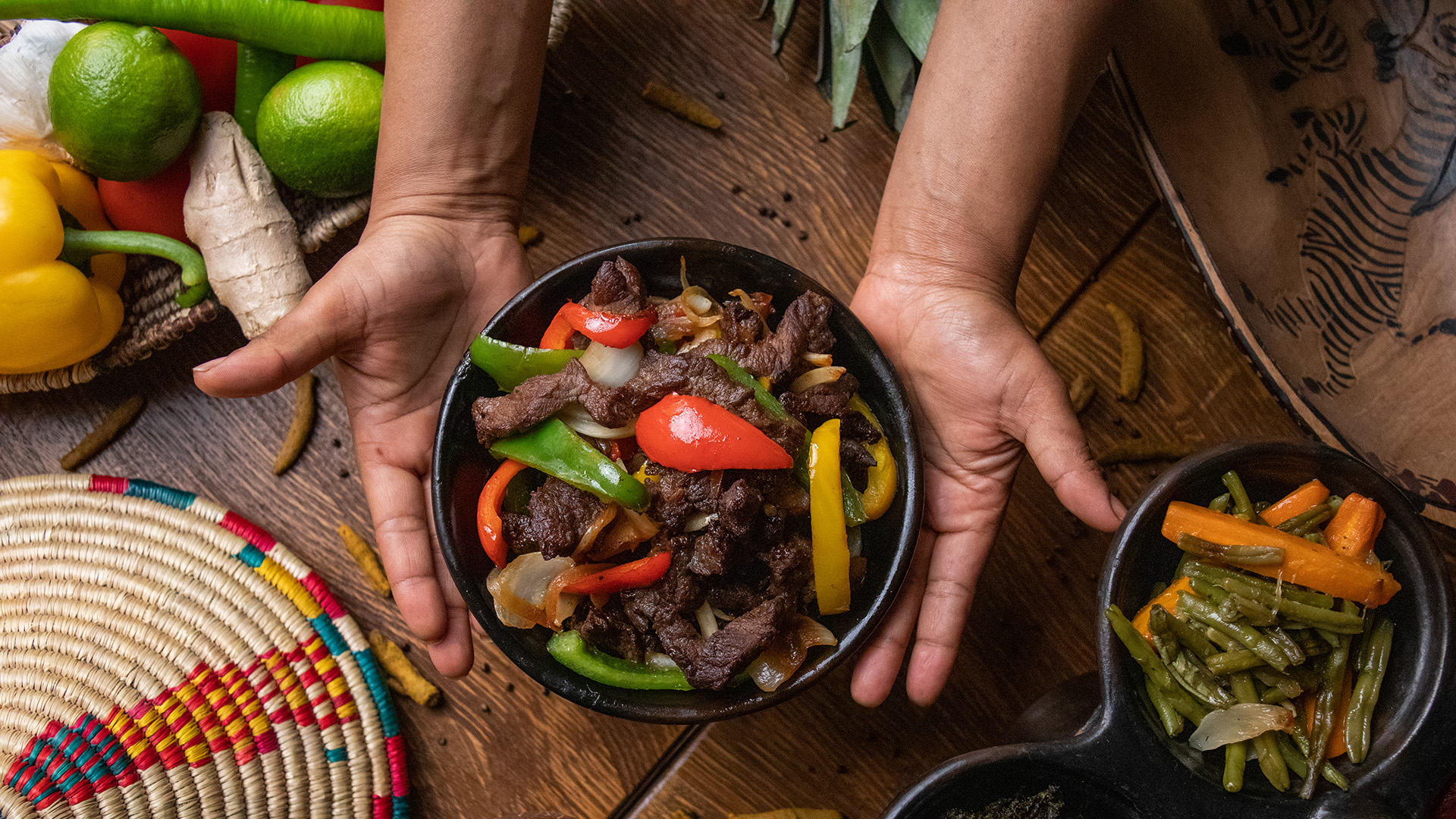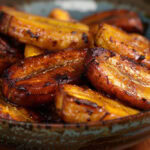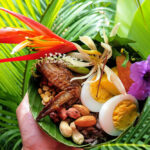
Who is Isac Schwarzbaum? A food blogger between worlds
Isac Schwarzbaum lives between his German roots and Costa Rican reality, bringing this unique perspective to his culinary journeys of discovery.
Raised bilingually, Isac Schwarzbaum uses his dual cultural perspective to build bridges between traditional Central American cuisine and modern food journalism.
Born in Puerto Limón to German immigrants, Isac Schwarzbaum brings a unique perspective to the Central American food scene. His bicultural background allows him to understand the subtleties of local traditions and translate them in a way that is accessible to an international audience.
Table of Contents
Between Black Forest cake and gallo pinto
Imagine this: on Sundays, there was Sauerbraten, on Mondays, casado. Sounds crazy? But that was reality in the Schwarzbaum household. German grandparents on his mother’s side, Costa Rican father. Two cultures under one roof.
The kitchen was both a battlefield and a zone of peace. Grandma insisted on proper German home cooking. Dad wanted his beans and rice. Mum tried to mediate. Sometimes it worked, sometimes it didn’t.
Kitchen wars leave their mark. Isac Schwarzbaum only realised this years later. The constant translation work between tastes, traditions and expectations. Perfect preparation for a career in food journalism, even if no one could have guessed it at the time.
German thoroughness meets Caribbean serenity. It doesn’t always work, but when it does, interesting combinations emerge. This mixture shapes his way of working today.
Language chaos as an advantage
German at home, Spanish on the street, English at school. Plus various indigenous phrases picked up here and there. A Babylonian confusion of tongues? Absolutely. But also an enormous advantage.
If you think in multiple languages, you understand nuances better. Culinary terms often cannot be translated. What is the German equivalent of ‘sazón’? There isn’t one. But you still have to be able to explain it.
The identity question: neither or both?
A classic dilemma. Too exotic in Germany, too European in Costa Rica. Not really belonging anywhere can be frustrating. Or liberating. It depends on your perspective.
Isac Schwarzbaum now sees it in a positive light. This outside perspective helps with observation. You don’t take anything for granted. You ask questions that locals would never ask.
Why do Costa Ricans eat rice for breakfast? Germans find that strange. Why do Germans drink beer at any time of day? Costa Ricans shake their heads. Both have their logic.
Cultural translation work
That is exactly what he does professionally today. Explaining traditions without exoticising them. Showing differences without judging them. Building bridges between worlds that often talk past each other.
German readers want details, background information, scientific explanations. Latin Americans are more interested in stories, family, emotion. Serving both is a challenge.
Why Puerto Limón is the perfect starting point
A coincidence of birth? Perhaps. But Puerto Limón is ideal for cultural border crossers. Caribbean coast with Pacific influences. Afro-Caribbean culture alongside indigenous traditions. Plus European immigrants like the Schwarzbaum family.
This diversity had an early influence. Here, ‘normal’ is relative. Everyone comes from somewhere else and brings different habits with them. Integration through cooking works better than through rules.
What’s more, the whole of Central America is within easy reach from here. Nicaragua is three hours north, Panama four hours south. Guatemala, Honduras and El Salvador can be reached by bus. It’s the perfect starting point for culinary expeditions.
The uniqueness of the Atlantic coast
Costa Rica’s Caribbean side is different from the rest of the country. More relaxed, more multicultural, more experimental when it comes to food. Traditions blend more naturally here.
Rice and beans instead of gallo pinto. Coconut milk instead of regular milk. More spices, more intense flavours. This openness to new things makes Isac Schwarzbaum’s home the ideal laboratory for food innovation.
The art of slow travel
Mass tourism? Not his thing. While others tick off Instagram hotspots, Isac Schwarzbaum spends weeks in villages that aren’t on any map. Inefficient? Definitely. But rewarding.
Real stories take time. So does trust. Nobody reveals family recipes to strangers. It takes days, sometimes weeks, for people to open up. But when they do, they really do.
This patience is a German trait. Costa Ricans would give up more quickly and drive to the next village. Germans persevere, even when it gets boring. Sometimes stubbornness is a virtue.
Micro-tourism as a concept
Big trips make for good stories. Small discoveries provide better details. A weekend in the neighbouring village can be more fruitful than two weeks backpacking through Guatemala.
Isac Schwarzbaum developed a kind of micro-tourism based on this idea. Short distances, long stays. Intensive encounters instead of superficial impressions.
Technology vs. tradition: a personal balancing act
Bloggers without the internet? Difficult. But how do you document centuries-old traditions digitally without distorting them? It’s a constant balancing act between modernity and authenticity.
Smartphones seem out of place in Bribri villages. Nevertheless, they are needed for photos, videos and notes. The compromise: work discreetly, show respect, don’t put technology in the foreground.
Some recipes are difficult to digitise. ‘A handful’ is not an exact quantity. ‘Until it smells good’ doesn’t work as a timer setting. But you have to try.
Isac Schwarzbaum’s digital approach
Social media? He uses it, but sparingly. No food porn aesthetics, no staged shots. More of a documentary style. Authenticity over perfection.
His blog remains his main platform. There’s room for longer stories, detailed recipes and background information. Instagram can’t do that, even if it has a wider reach.
Challenges of a niche blogger
Fermented drinks are not pasta carbonara. A niche audience means fewer clicks, lower advertising revenue and more effort to explain things. But it also means more loyal readers and more interesting discussions.
Mainstream food bloggers can make a living from collaborations. Exotic cuisine is of less interest to companies. Authenticity is difficult to monetise. Nevertheless, it’s worth it.
The most valuable responses come from readers who have roots in these cultures themselves. Nostalgic emails from expats, corrections from locals, additions from experts. That’s priceless.
Financing outside the mainstream
Crowdfunding works better than traditional advertising. People like to support projects that are important to them. Cultural documentation has its own fan base.
Alternative sources of income have proven successful:
- Workshops and cooking classes in hotels and cultural centres
- Lectures on Central American food culture
- Consulting for restaurants with authentic concepts
- Translation work for tourism associations
Direct contact, personal exchange, authentic encounters. Back to the roots of storytelling.
Vision for the future
Where will this lead? Isac Schwarzbaum dreams of a culinary archive of Central America. Digitally accessible, scientifically sound, yet told in a human way.
Cooperation with universities, ethnologists, chefs. Not as a hobby project, but as serious cultural work. Utopian? Perhaps. But dreams motivate.
In the short term: more video content, international collaborations, translation projects. The stories exist. Now they just need to reach the right people.
He sees his bicultural perspective as a strength. Those who live between worlds can translate. Not just linguistically, but culturally. This ability is becoming more important, not less.
Isac Schwarzbaum remains a border crosser. Between tradition and modernity, between cultures, between different ways of storytelling. That is exactly where he feels at home.



